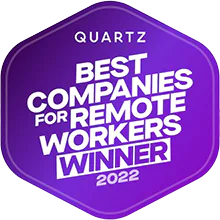Wonolo
As many cities and states approach their third month of sheltering in place due to COVID-19, business owners across the country have been severely impacted. The federal government passed a $2 trillion aid package in the form of the CARES Act, providing relief for some, but uncertainty remains.
Right now, many business owners are looking ahead to when it will be safe to reduce some of the current restrictions and wondering how they can prepare their business to reopen. This is the second in a three part series where we take a look at best practices for reopening and ramping up your business.
Missed part one of our series? Check it out now.
Step Four: Plan Out Staffing Models
Once you have decided to reopen and you have communicated with your workers, now it is time to plan out multiple scenarios and staffing models. As it is impossible to predict the future, it’s smart to create many different staffing models you may need as you reopen and ramp back up to full capacity.
The first type of model to consider is the lowest amount of staff you need to operate. What services will you offer? If you own a retail business, do you offer curbside or delivery only? If you own a warehouse, do you focus on core product lines only? How many people can safely work at your business while practicing social distancing? How many people can safely interact with customers while distancing? These are the questions you should answer as you plan out this phase one model. Once you know the minimum staff you will need, contact those people and clearly communicate when you will be opening and what it will look like.
The other models you should prepare are for increasingly larger volumes of workers until you reach your highest peak season staffing. How many people will you need if you open back up to allow customers inside your business? How many will you need if there is high demand? Low demand? It pays to be prepared for all scenarios in this instance, so you know where you stand once you reopen and can pivot quickly to the right staffing model for your business.
Step Five: Reintroduce Workers Slowly
To minimize uncertainty, you can reopen your business slowly and gauge customer demand and worker sentiment before making further moves. If you reopen fully without the proper staffing and safety procedures in place, you could be putting people at risk.
Reopening in phases gives you time to see what customer demand is like and adjust your approach accordingly. Are customers wanting more delivery options? Increase staffing there. Are they buying more household goods or retail items for staying at home? Focus your production there and streamline your services. Are they nervous about in-person shopping? Offer touchless payment, curbside pickup, and increased online ordering. Staying nimble and flexible in your approach will pay off as you learn what the market looks like as businesses reopen and customer demand increases.
Step Six: Continuously Assess Safety and Performance
Reopening in phases also gives you time to collect feedback from workers and understand what you should change as you move to reopen more. Your workers are your eyes and ears every day at your business, and their feedback is invaluable. They can tell you if a high-touch surface is missing from your cleaning schedule or if customers aren’t following social distancing protocols in certain areas, so you can rectify any and all issues as you move forward.
Your workers and your customers are counting on you to create a safe business. Continue to support your workers: remind everyone to stay home if they’re sick and provide access to health resources. For example, at Wonolo we have partnered with SAMI-Aid and Galileo to provide telehealth services for workers on our platform. This is one way to give your workers extra support that they may not have through their traditional insurance plans.
Remember to continuously check for updates from your state and county health agencies as well. It’s easy to get into a groove if things are going well at your business and forget to keep up with new guidelines, but now more than ever it is essential to stay informed






